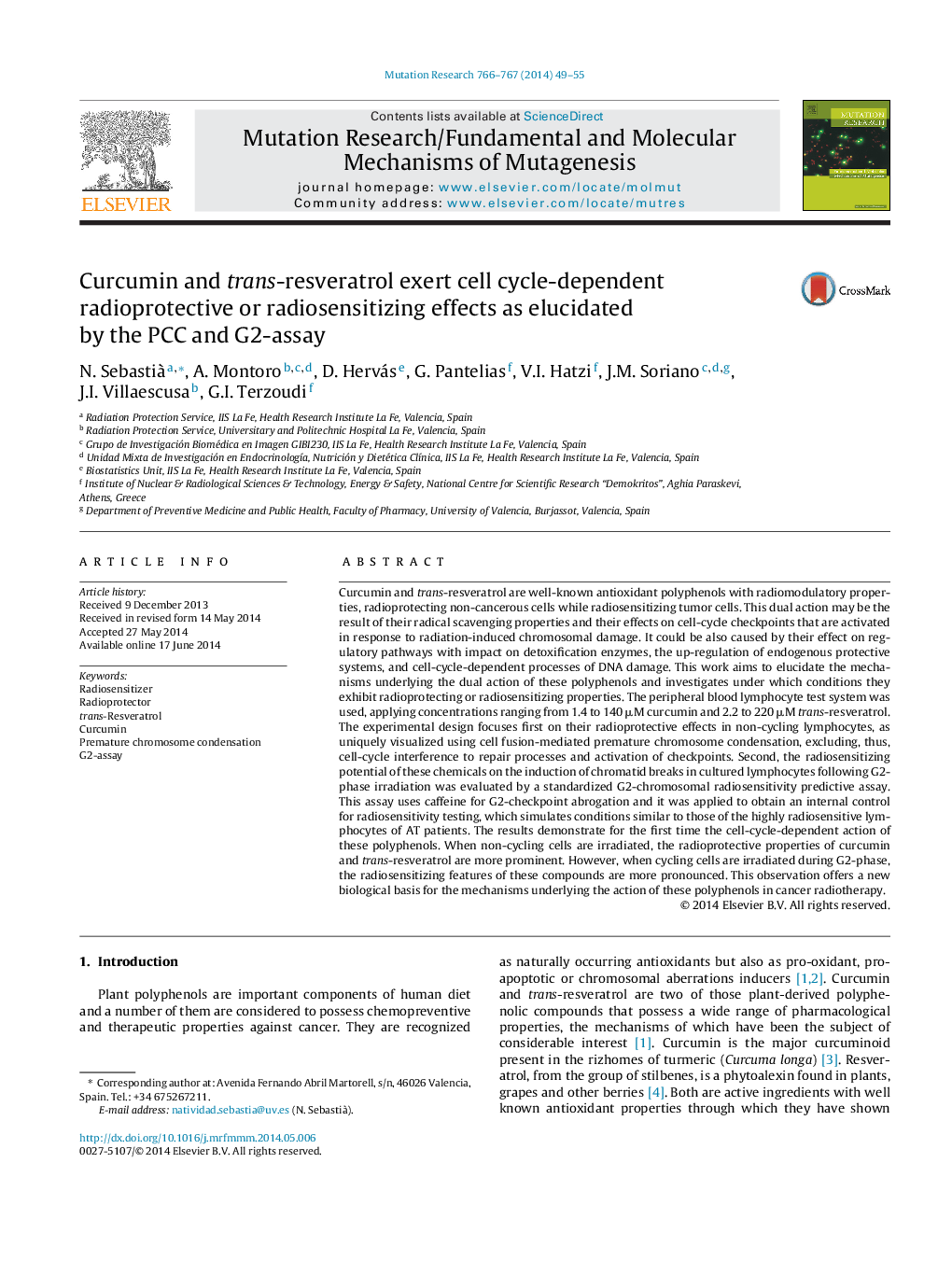| کد مقاله | کد نشریه | سال انتشار | مقاله انگلیسی | نسخه تمام متن |
|---|---|---|---|---|
| 2146320 | 1548332 | 2014 | 7 صفحه PDF | دانلود رایگان |

• Curcumin and trans-resveratrol can exert radioprotective or radiosensitizing effects.
• The mechanisms underlying such dual action were elucidated using the PCC and G2-assay.
• Radioprotection occurs in non-cycling cells exposed to curcumin and resveratrol.
• Radiosensitization occurs in cycling cells exposed to the chemicals.
• G2-checkpoint abrogation by the chemicals underlies the radiosensitizing mechanism.
Curcumin and trans-resveratrol are well-known antioxidant polyphenols with radiomodulatory properties, radioprotecting non-cancerous cells while radiosensitizing tumor cells. This dual action may be the result of their radical scavenging properties and their effects on cell-cycle checkpoints that are activated in response to radiation-induced chromosomal damage. It could be also caused by their effect on regulatory pathways with impact on detoxification enzymes, the up-regulation of endogenous protective systems, and cell-cycle-dependent processes of DNA damage. This work aims to elucidate the mechanisms underlying the dual action of these polyphenols and investigates under which conditions they exhibit radioprotecting or radiosensitizing properties. The peripheral blood lymphocyte test system was used, applying concentrations ranging from 1.4 to 140 μM curcumin and 2.2 to 220 μM trans-resveratrol. The experimental design focuses first on their radioprotective effects in non-cycling lymphocytes, as uniquely visualized using cell fusion-mediated premature chromosome condensation, excluding, thus, cell-cycle interference to repair processes and activation of checkpoints. Second, the radiosensitizing potential of these chemicals on the induction of chromatid breaks in cultured lymphocytes following G2-phase irradiation was evaluated by a standardized G2-chromosomal radiosensitivity predictive assay. This assay uses caffeine for G2-checkpoint abrogation and it was applied to obtain an internal control for radiosensitivity testing, which simulates conditions similar to those of the highly radiosensitive lymphocytes of AT patients. The results demonstrate for the first time the cell-cycle-dependent action of these polyphenols. When non-cycling cells are irradiated, the radioprotective properties of curcumin and trans-resveratrol are more prominent. However, when cycling cells are irradiated during G2-phase, the radiosensitizing features of these compounds are more pronounced. This observation offers a new biological basis for the mechanisms underlying the action of these polyphenols in cancer radiotherapy.
Journal: Mutation Research/Fundamental and Molecular Mechanisms of Mutagenesis - Volumes 766–767, August–September 2014, Pages 49–55